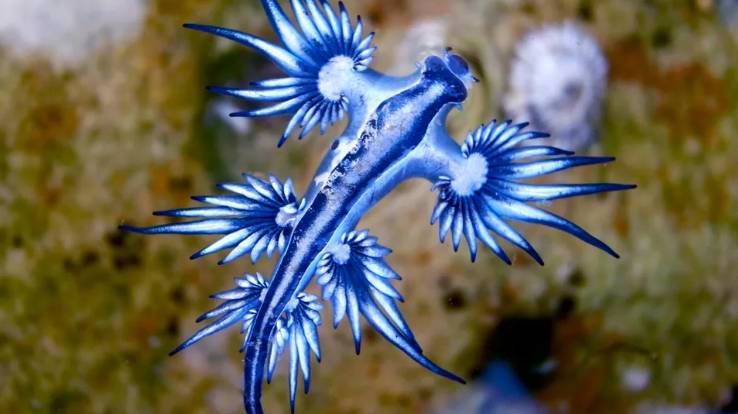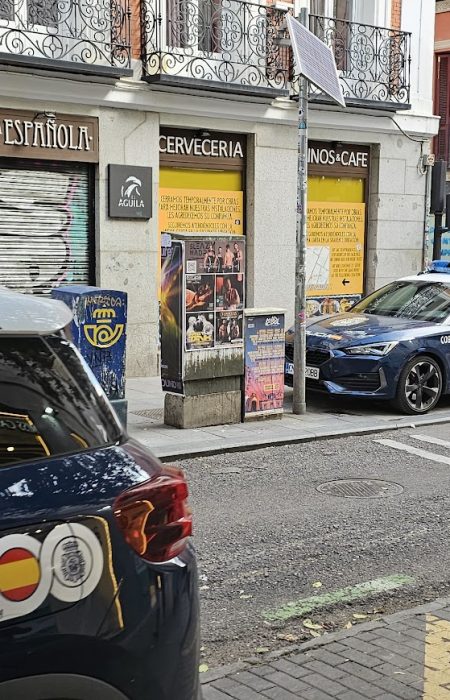The beautiful and otherworldly “blue dragon” sea slug, Glaucus atlanticus, has been spotted on beaches along the Costa Blanca and other Spanish coastlines. While its striking electric blue colour and unusual shape may entice curious beachgoers, experts advise them to keep a safe distance. This tiny creature has a powerful sting, and its presence is directly related to other dangerous marine life.
What is the Blue Dragon?
The blue dragon is a sea slug, or mollusc without a shell, that rarely grows longer than 3 to 5 cm. It also goes by several other names, including blue glaucus, sea swallow, and blue angel. It lives in the open ocean, floating upside down on the water’s surface, propelled by currents and wind.
Its distinctive colouration is a type of camouflage known as countershading. From above, its vibrant blue underside blends in with the sea, making it difficult for birds to identify. From below, its silvery-grey side is difficult to distinguish from the sunlight reflecting on the water’s surface, protecting it from predators swimming beneath.
A Stolen Venom: The Deadly Connection
The blue dragon’s most intriguing and dangerous characteristic is its “stolen” venom. Unlike many other creatures, it does not make its own poison. Instead, it feeds on other venomous marine animals and stores their stinging cells, known as nematocysts, within its own body. It then concentrates this venom in finger-like appendages, known as cerata, making its sting even more potent than that of the prey.
The blue dragon’s favourite food is Portuguese man o’ war. This siphonophore, which is frequently mistaken for a jellyfish, is known for its extremely painful and dangerous sting. By consuming the man of war, the blue dragon effectively transforms into a living, concentrated venom bomb.
Why Are They Appearing on the Costa Blanca?
Blue dragons are typically found in warmer, tropical waters of the Atlantic, Pacific, and Indian oceans, but recent sightings in the Mediterranean Sea are not unusual. According to experts, their appearance on Spanish shores is most likely the result of a combination of rising sea temperatures caused by climate change and strong currents. The currents that bring the Portuguese man of war to the coast also carry their predators, the blue dragons.
Sightings have previously been reported along the Costa Blanca, including Alicante. Torrevieja and Guardamar. Recently, they were discovered on beaches in Valencia and even Cadiz, prompting local authorities to issue warnings and, in some cases, temporarily close beaches.
What to Do if you see a Blue Dragon
If you see one of these beautiful creatures on the beach or in the water, experts advise you not to touch it. Even if the animal appears to be dead, its venom can be active.
The symptoms of a blue dragon sting are similar to those of a severe jellyfish sting, such as:
- Pain and burning sensations
- Redness and skin irritation
- Blisters
- In some cases, nausea and vomiting
For those with sensitive skin or allergies, the reaction may be more severe. If you are stung, rinse the area with saltwater (never freshwater), and seek medical attention if the symptoms are severe or persistent.
The blue dragon is an intriguing example of the intricate connections found in marine ecosystems. Its appearance on the Costa Blanca serves as a reminder that the ocean is full of surprising and beautiful life, and even the smallest creatures can be a source of wonder and a reason for caution.









No Comment! Be the first one.